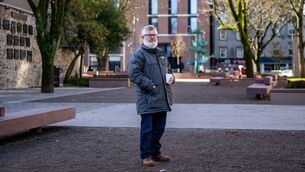Impressive spin on a west side story
ALANNAH HOPKIN’S new book, Eating Scenery (The Collins Press, €17.99) is, as the title implies, a travelling feast. However, the food and scenery are only elements in the background of its real focus, west Cork, the people and the place, as the sub-title goes. The latter are treated intelligently and engagingly, providing a rich and digestible compendium of ingredients, only one of which is Slow Food and its exponents in west Cork.
The interface between people and place is the theme. Many of those mentioned are from overseas and quite a few are famous beyond Ireland. However, it is not a blow-in guide to west Cork celebs but rather explores changes in the west Cork world by interviewing people who have been instrumental in making them or have contributed to the cultural ratatouille associated with the place.
It is not forgotten that the charm of west Cork is in the scenery and the people who were here long before the trendies, artists, artisans and foodies arrived, and that these remain the wellspring and attraction for all the well-known names that have come to seek spiritual rehabilitation and a life more tranquil along its coasts.
I must note that Ms Hopkin mentions my Walks of Seven West Cork Islands in her book but says of it, only, that it was written at the request of the authority promoting the islands.
I must recommend Eating Scenery to newcomers and Irish residents alike. Within its covers, the new arrival will glean a wealth of information about the place, past and present, and those who live in the area will find themselves better informed. The history is impressively researched and vividly told, tightly written and very readable. But the thrust of the book is “changing” west Cork. Its remit is the present and more recent past.
In an early chapter, Somerville Large’s record, The Coast of West Cork and published in 1972, is used to compare and contrast with the region now. The history of the “incomers” is related to the second-homers and the holiday boom. As the author says: “The climate has saved west Cork from the kind of intensive development that had ruined much of the Mediterranean coast.” Yes, and it has meant that those who have come to settle — at least in the far west, beyond commuter-reach of Cork — commit themselves to more diverse interests, the changing seasons and the wild world around them, rather than the siren seductions of sun, sea and sand.
The themes reflecting this diversity — farming, island life, the changing landscape, environmental activism, big house life, holiday-makers, blow-ins, castle restoration, the murder of Sophie Toscan du Plantier, enterprises in the arts and crafts, the GAA, Gaeltacht life and Christian shrines with pagan customs — are led by personal stories. This gives them an immediacy a dispassionate or objective commentary would not.
An example is the Farmers and Food Producers chapter. Alice Taylor’s vivid memories of a west Cork childhood are evoked, cheesemakers and duck-rearers, REPs farmers uneasy about set-aside in a hungry world, successful agri-business coops with artisan products — their stories are told. Many of the artisan food-makers are, apparently, of Protestant stock, and we are given reasons for this. Many have come from Britain. A philosophy lecturer turned cheese-maker memorably tells us, “Farming is such an honourable profession. It makes a great life.”
I am especially pleased Ms Hopkin has devoted a chapter to the threats to west Cork’s natural heritage, and access to it. Environmental activism is essential in preserving this inspiring world. Usurping development cannot be allowed to eat away the scenery or to disbar the public from it. We must all be alert to the dangers from shortsighted or negligent county planning.
Nevil Swinchatt’s cover and spine design is evocative and inviting, with a subtle map of west Cork superimposed on the scenery. However, I fear that, to the casual bookshop browser, the prominence of the word “eating” against the lighter background may make it seem like a restaurant guide.














